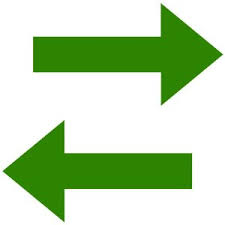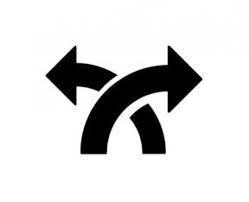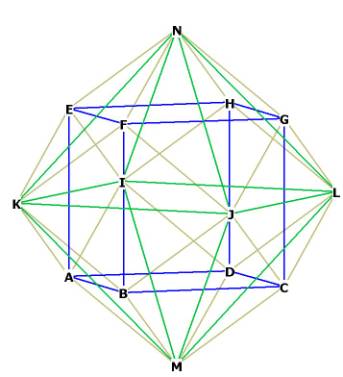|
(2019
midterm assignment) Model Midterm answers 2019 (Index) Essay 1: Compare, contrast, and evaluate Narratives of the Future |
 |
Oneydy Alonzo
Change and Choice
Hearing for the first time the sub-genre
of futuristic literature, I thought of a sci-fi story where high-tech alien
drones attack humanoids who take over their world. As the course progresses, I
have become familiar with the sub-genre, and see that although that is an
example, there are many ways to depict the future in literature. Some types of
futuristic works of literature are millennial,
evolution and alternative futures. In
A Gift to the Dead and a Warning to the
Living, Tom Britt explains that futuristic writers use events of the present
to create their stories.
Although I do agree that the present is
a factor in inspiring literature, I feel that the past is also a factor.
Science fiction writers bring a deeper meaning to the story
by connecting their past and present experiences to their imaginations. They
choose their future in the story. Like most literature, themes can intertwine
beautifully. Future literature’s themes of millennial, evolution and alternative
futures are not mutually exclusive. In the course texts, we have seen that all
these themes intertwine beautifully.
Reflecting, the narrative I was most familiar with was
the millennial or creation/apocalypse theme. Most of us in American society are
familiar with stories from the Bible, specifically the books of Genesis and
Revelation. In these books, “God created the heavens and the earth” (NIV Gen
1:1), and then, God reveals an apocalyptic prophecy, in which he says,
“I am coming
soon! My reward is with me, and I will give to each person according to what
they have done” (NIV
Rev 22:12-13). The wicked will receive a wicked reward and the faithful a
faithful one. The bible evidently shows a beginning and end, which is symbolic
of the millennial narrative.
In Parable,
the creation narrative is more like an origin story. Lauren, the protagonist,
creates her own religion (Earthseed) and becomes the saviour/prophet to people
in the world they live in. The apocalypse narrative is also prevalent. Lauren’s
world is an environmental apocalypse. Lauren believes that her religion is the
only way of surviving. I believe that Lauren's religion is based on what she has
experienced. Her preacher/ father and her avid knowledge of survival books have
created Earthseed. I feel that her religion is an evolution of Christianity. In
Parable, we can see the millennial narrative intertwined with the evolution
narrative.
Evolution is defined in many ways. The theory of
evolution is what most people link it to nowadays. In
Parable, Lauren goes through an
evolution in the way that she depicts God.
“All that you touch You Change.
All that you Change Changes you. The only lasting truth Is Change. God is
change” (79). She believes that God is what we
create it to be and that God is moldable and can evolve into what we want God to
be. Because she is constantly evolving, so is her depiction of God. In the essay
titled, The Three Narratives: Hand in
Hand, Nikki Jones writes that Lauren “is always growing, evolving, and
adapting to the steady changes that happen in her life.” The Judeo-Christianity,
God has created our future and although we have free will, God’s plan for us has
already been set in stone.
In Bears Discover
Fire, we see that evolution has taken a more scientific meaning. Climate
change, diet and lack of hibernation have caused the bears to evolve to discover
fire. The mother even says, “What’ll they think of next!” (20). She believes
that they may evolve to do other things. As the story progresses, we see that
Mother, because of her age, is the bridge between the bears and humans. The
bears do not seem to be the only ones that have evolved. Bobby describes the
scene after they wake up to find out Mother passed away while sitting by the
fire. “The troopers stayed behind and scattered the bears’ fire ashes and flung
their firewood away into bushes. It seemed a petty thing to do. They were like
bears themselves, each one solitary in his own uniform” (28). Bobby uses the
bear as a way to call the troopers savage. Humans seemed to have evolved into
solitary-like creatures. They do not connect as they may have back when Mother
was younger. In this story, we see evolution as both progress and a decline.
In
Time Machine, we can also see how the
human race has devolved. We read about the future of the human race. The
time-traveller has determined that time is the fourth dimension and decides to
travel far into the future. He discovers that “Man
had not remained one species, but had differentiated into two distinct animals”
(5.33):
the leisure class (Eloi) and the working-class (Morlocks). The Eloi have evolved
to become dumb, lazy and pretty creatures, and the Morlocks smart, nocturnal and
ape-like creatures. Although the time-traveller goes hundreds of thousands of
years into the future, he returns and tells his friends of his adventure. In the
end, we find that the time-traveller decides to travel again, “and, as everybody
knows now, he has never returned” (12.33). I see this part of the story as a
hint of the alternative future narrative. If there were no time machine, his
future would have been different. His final journey would have never happened
and he would have possibly invented other things. Since he is gone, his future
and the future of the others around him have been altered.
Unlike millennial being linear in time, and evolution
being cyclical in time, alternative futures is branch like. As I became more
familiar with the narrative of alternative futures, I see that time-travel is
common, but it is not limited to that. In
Better Be Ready ‘Bout Half Past Eight, we can see that both the evolution
and alternative future narrative intertwined. Reading this text in 2019 compared
to when it was published in 1993, the views of the readers can be different. In
1993, the thought of having a shower for someone that had gender reassignment
surgery was considered taboo. If someone were to have read this story then, they
would have considered this an impossible alternative future. In 2019, I could
see myself going to a gender reassignment shower. Although society has a long
way to go with inclusivity, times have changed dramatically in two decades.
Both narratives merge within the story through both
Byron’s change from being close-minded to the acceptance of Zoe’s transition, as
well as Zach’s physical transition to becoming Zoe. In the beginning, best
friends Byron and Zach are working in a science lab, when Zach opens up to Byron
about his gender reassignment surgery. Byron, in shock, shuts down and becomes
uncomfortable around Zach. Throughout the story, Byron battles with the fact
that femininity and masculinity are in both men and women. Eventually, by
talking to his wife, a therapist and with his deceased mother, he finds that he
himself has feminine characteristics and that his profession is what has given
Zach the opportunity to transition. “Byron, it’s wonderful what science has done
for your friend…This modern world! You should embrace change, son” (37). Byron
evolves into a more accepting friend and Zach evolves into Zoe. Byron and Zoe,
as well as everyone near them, have
now become part of an alternative future. If Zach never transitioned to becoming
Zoe, Byron may not have ever been accepting to the transgender community. He
also may have raised his boy to the old-fashioned values he had.
The connection of each future narrative to the other is
prominent in science fiction literature. Millennial, evolution and alternative
future narratives have diverged in the literature of the future. In
Parable, we saw that Lauren’s key to
survival in her apocalyptic world was Earthseed, an evolved religion from
Christianity that believed that God is changed. In
Time Machine we see that the time
traveller has seen the evolution of the human race become two separate races and
that in the end, his disappearance from his own time has altered his future and
the others in his life. In Better Be
Ready, we find evolution in the advancements of science, and the changed
views of Byron toward Zoe, and the alternative future Zoe has created for her
and everyone around her. If we dig deeper into future literature, we find deeper
meaning. In the end, we are changing our own futures by reading ideas that we
may have never thought of before.
 |
 |
 |
